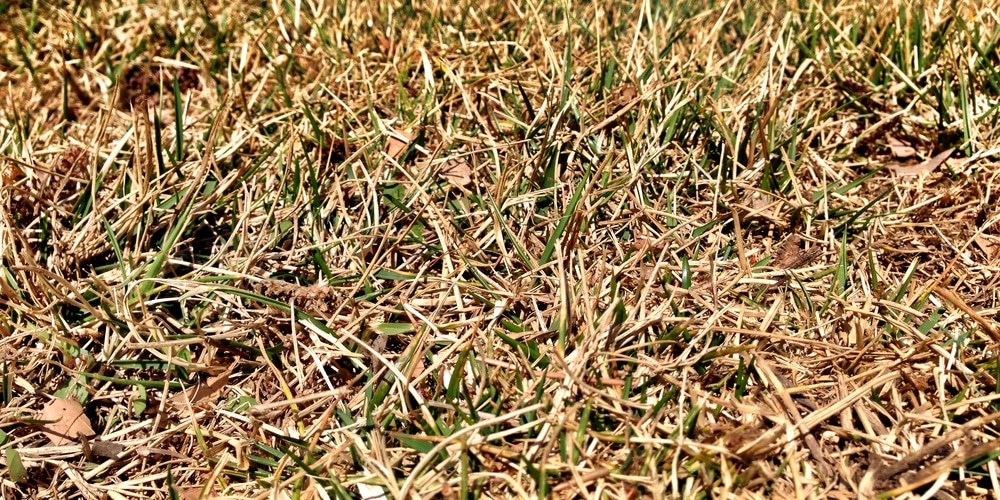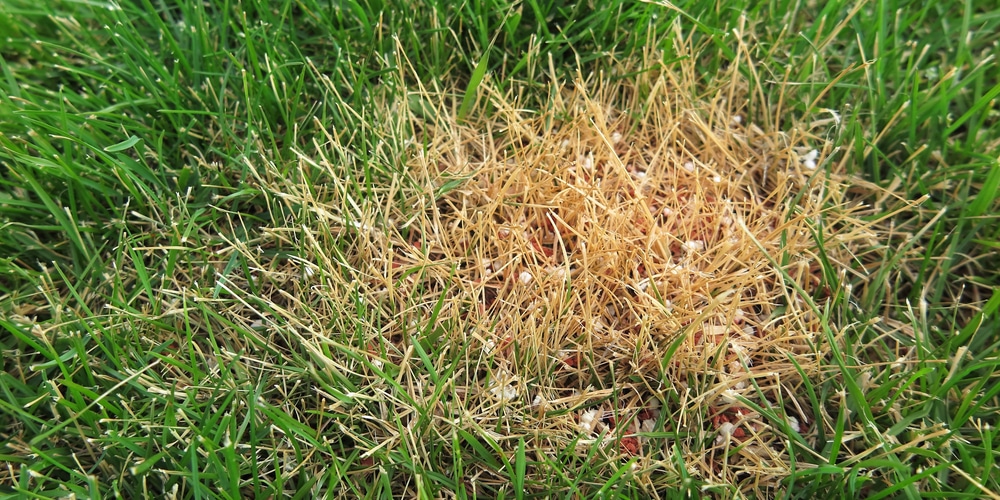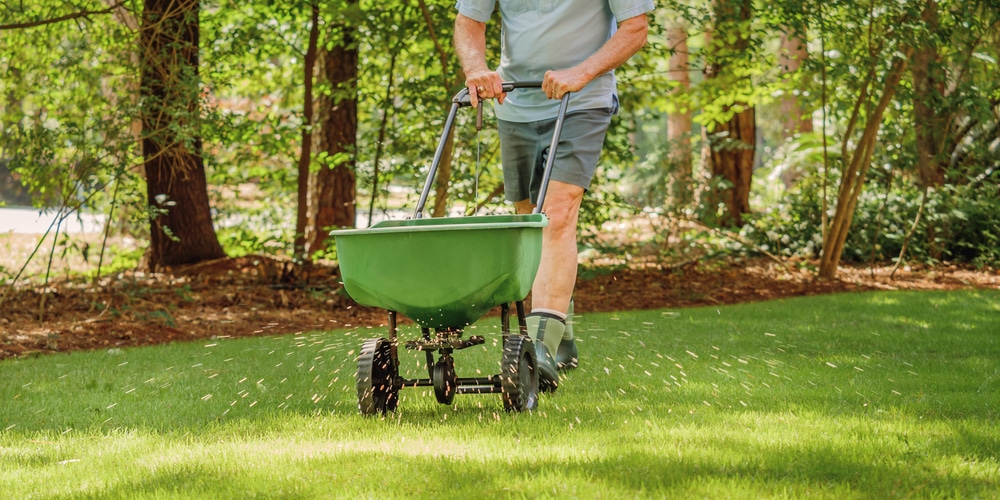If you’ve been looking out at your yard and noticed streaks of brown or green, you likely see the results of fertilizer streaks.
While they may not be the most attractive thing to look at, they are easy to fix!
This blog post will discuss what causes fertilizer streaks and how to get rid of them quickly and easily.
What Does It Mean If You Get Fertilizer Streaks?

Fertilizer streaks are long, narrow strips of grass that are a different color from the rest of the lawn. They are caused by an uneven distribution of fertilizer, which can occur when the lawn is mowed in a pattern or when the spreader is not set properly.
Fertilizer streaks usually indicate that the fertilizer was improperly applied. Streaks can occur if the fertilizer is applied too heavily, if it is applied to wet leaves, or if it is applied in windy conditions. Fertilizer streaks will often appear as green or yellowish-green stripes on the leaves of plants.
In some cases, the streaks may also be visible on the stems or branches. While fertilizer streaks are generally harmless, they can be unsightly and may reduce the plant’s overall health.
Reasons Why Fertilizer Streaks Are Present

There are a few reasons fertilizer streaks might be visible on your plants. The most common reason is simply that the fertilizer was not evenly distributed when applied. This can happen if you have an old or poorly calibrated spreader, apply the fertilizer in windy conditions, or apply it to wet leaves.
Another common reason for fertilizer streaks is that the fertilizer was applied too heavily. When this happens, the fertilizer can burn the plant leaves, causing brown or yellow streaks.
In most cases, the problem is simply that you failed to water the lawn after applying the fertilizer. When fertilizer is left on the soil’s surface, it can be picked up by rain or watering and carried away in streaks.
Excessive thatch in your lawn can also cause fertilizer streaks. Thatch is a layer of dead grass, leaves, and other organic matter that builds on the soil’s surface. If thatch is more than ½ inch thick, it can prevent fertilizer from reaching the roots of the plants.
Lastly, fertilizer streaks are often caused by using a poor-quality of fertilizer that is mostly filler. When applied to the soil, the filler material can quickly wash away, leaving behind bare patches of ground.
In addition, the filler material can also prevent water and nutrients from reaching the roots of plants, leading to yellowing or wilting leaves.
How to Fix Fertilizer Streaks
Check Your Spreader.
The first step in fixing fertilizer streaks is to check your spreader. If you’re using an old or poorly calibrated spreader, likely, the fertilizer is not being evenly distributed. Make sure that the settings on your spreader are correct and that you’re applying the fertilizer at the proper rate.
Water The Lawn.
If you didn’t water the lawn after applying fertilizer, that could be the reason you see streaks. Watering the lawn will help to distribute the fertilizer more evenly and will also help to prevent burning.
Do Not Apply Fertilizer in Windy Conditions.
If you live in an area with high winds, applying fertilizer is best when the wind is calm. Otherwise, the fertilizer can be blown away before it has a chance to be absorbed by the soil.
Use a High-Quality Fertilizer.
If you’re using a poor-quality fertilizer, primarily filler, the streaks are likely caused by the filler material washing away. Use a high-quality fertilizer designed for your specific type of plant.
Clean Up.
Before adding fertilizer, ensure your grass is free from thatch. A quick way to do this is to use a garden hose and spray water over the entire lawn. This will help break down the thatch and make it easier for fertilizer to reach the roots of your plants. You can also use a rake or dethatching machine to remove thatch from your lawn.
Apply the Fertilizer Correctly.
When applying fertilizer, be sure to follow the instructions on the package. Applying too much fertilizer can burn the leaves of your plants while applying too little will not be effective. It’s also important to apply the fertilizer evenly to avoid streaks.
Conclusion
In conclusion, following these simple steps should help fix any fertilizer streaks in your yard. The most important thing is to be patient and not try to rush the process. Once you’ve followed all the steps, you should have a beautiful, healthy lawn that is the envy of your neighborhood. Thanks for reading!
Related Article: Signs that Grass Has Been Overwatered
